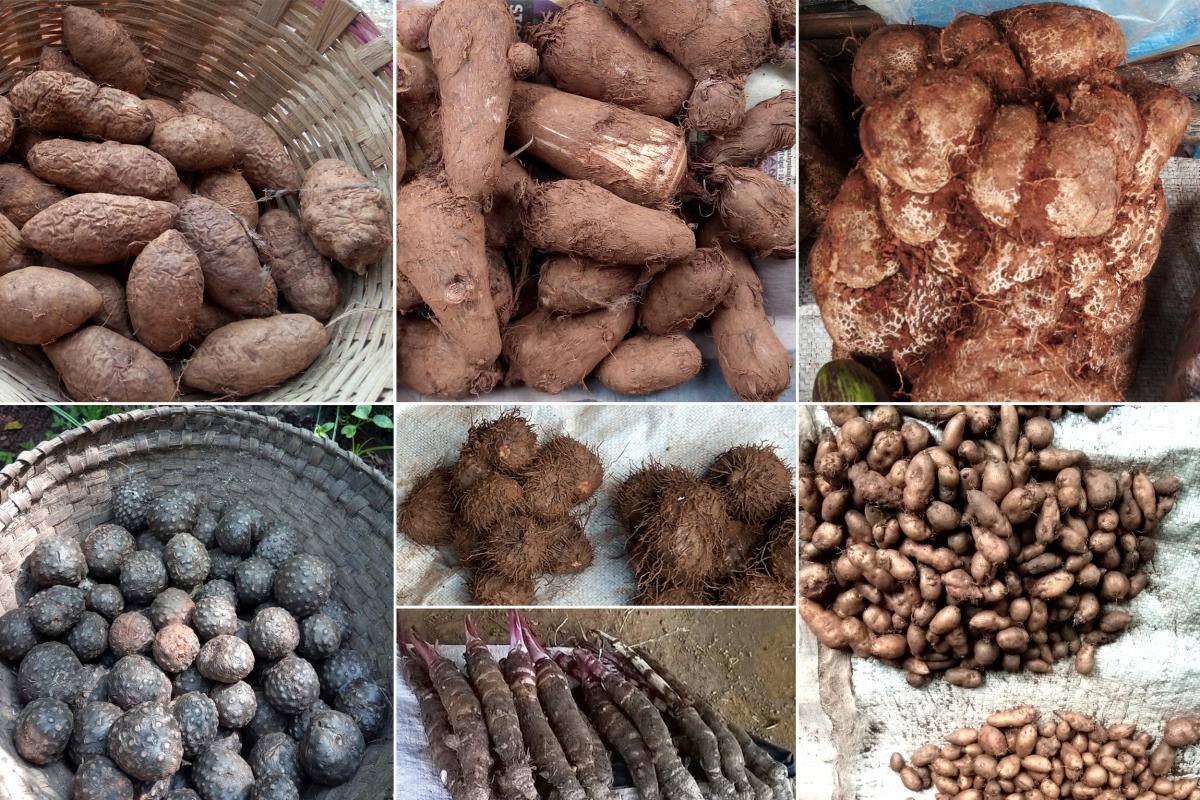
Yams are tuber vegetables that are sometimes mistaken for sweet potatoes. Yams are less sweet and more starchy than sweet potatoes. Like sweet potatoes, they have white, yellow, purple, or pink flesh. The yam's ripeness affects its colour. While yellow, orange, and purple flesh yams are rich in antioxidants, complex carbs, and vitamins, white yams are strong in potassium. They provide several health advantages. As an excellent meal choice for digestion and weight reduction, they are, for instance, a source of resistant fiber. Yams reduce the risk of blood sugar increases following a full meal. They also possess several additional characteristics that make them nutritious.
Types of Yams
Elephant Foot Yam
Amorphophallus is a member of the Araceae family. Due to its high production potential and widespread use as a vegetable in a variety of delectable cuisines, Amorphophallus paeoniifolius, also known as the Elephant foot yam or White spot giant arum, is a tropical tuber crop that offers excellent potential for adoption in tropical nations as a cash crop. In essence, elephant foot yam is a Southeast Asian crop. In Sri Lanka, the Philippines, Malaysia, Indonesia, and other Southeast Asian nations, it grows wild. Bihar, West Bengal, Kerala, Karnataka, Andhra Pradesh, Maharashtra, and Orissa are the primary growing regions in India for this crop.
Greater Yam
Dioscorea alata belonging to the family Dioscoreaceae includes the more common tropical plant known as the greater yam. The crop can't endure freezing conditions or extremely hot weather. It is best to have temperatures around 300°C and 120–200 cm of rain spread out across the growing season. Shorter days throughout the later portion of the growing season and longer days during the early phases of growth enhance successful tuber development. It serves as a flavouring for milk, ice cream, Swiss rolls, and other pastries in addition to being utilized in a variety of sweets. It has been used in folk medicine as a laxative, a vermifuge, and a cure for tumours, inflamed hemorrhoids, gonorrhea, leprosy, and fever. Sree Keerthi, Sree Roopa, Indu, and Sree Shilpa are a few types.
Lesser Yam
The Lesser Yam often referred to as Dioscorea esculenta, is a type of yam having a smaller corm than most other yams. It is a member of the Dioscoreaceae family and is bigger than a sweet potato or potato. Dioscorea esculenta, a member of the genus Dioscorea, refers to a plant's capacity to produce edible roots, popularly known as yams or Chinese yams because they are mostly farmed in Asia. Because of its imminent demise, agronomists refer to this species as the "hungry yam." Sree Latha and Sree Kala are two variations.
White Yam
A new crop species Dioscorea rotundata of edible yam from Nigeria called the "white yam" or "African yam" is a member of the Dioscoreaceae family. a right-twining, spiky vine with a cylindrical stem that is generally covered in dark, glossy green leaves. The average weight of tubers is 2 to 5 kg, but in favourable locations, they can reach 10 kg and even 20 to 25 kg have been recorded. However, if the tubers are picked too soon, they become hard and unpleasant. There is a distinct dormant season for tubers. West Africa is the species' natural habitat. referred to as a good plant for agroforestry. Sree Subhra, Sree Priya, and Sree Dhanya are examples of varieties.










